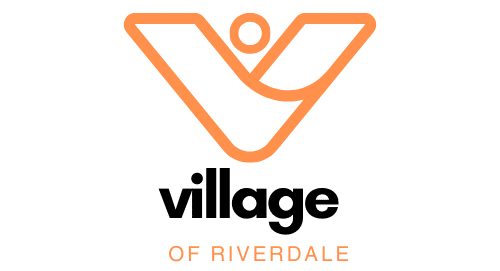What Are the Key Training Considerations for Senior Athletes in Masters Track and Field?

As athletes age, their training needs and capabilities change. It’s a fact of life that most people will experience a decline in physical performance as they get older. However, that doesn’t mean that masters athletes – those over the age of 35 who continue to compete in sports – should hang up their running shoes. In fact, with the right approach to training, these athletes can continue to improve their performance and stay competitive well into their later years. In this article, we’ll delve into some key considerations for masters athletes in track and field, from muscle strength to recovery time.
1. The Aging Athlete: An Overview
Before delving into the specifics of training, it’s crucial to understand the physiological changes associated with aging that impact sports performance. Several studies on the pubmed database reveal that as individuals age, their muscle mass and strength decline, cardiovascular endurance decreases, and recovery times increase. A 2015 study published in the Journal of Applied Physiology found that endurance performance starts to decline around the age of 35, with significant decreases seen after the age of 50.
A lire également : How Can Normobaric Hypoxia Training Benefit Athletes Living at Sea Level?
In addition, older athletes face a higher risk of injury due to decreased joint flexibility and bone density. Therefore, their training programs must be adapted to mitigate these risks while maximizing performance.
Despite these challenges, many masters athletes continue to excel in their sports. They demonstrate that age is not necessarily a barrier to performance, but rather a factor to be considered and managed through appropriate training strategies.
Sujet a lire : How Can Multi-Sensor Wearables Enhance Performance Monitoring in Endurance Trail Runners?
2. Strength Training: A Must for Masters Athletes
Strength training is particularly important for masters athletes. As we age, our bodies lose muscle mass, a condition known as sarcopenia. This loss is particularly prominent after the age of 50, leading to a decrease in strength and power. However, regular strength training can help slow down this process and even reverse some of the losses.
Specifically, for track and field athletes, who need to sprint, jump, and throw, maintaining muscle strength is vital. Research shows that strength training can improve sprint performance by increasing stride length and frequency. It also helps in maintaining joint stability, which is crucial for preventing injuries.
When designing a strength training program for masters athletes, consider the athlete’s existing strength levels, any injuries they may have, and their specific event requirements. Intensity should be high enough to promote muscle adaptation but not so high that it causes undue stress or injury.
3. Endurance Training: Maintaining Heart Health and Stamina
Endurance training plays a significant role in maintaining cardiovascular health, which tends to decline with age. Regular endurance exercise can help keep the heart and lungs healthy, boost stamina, and improve overall sports performance.
For track and field athletes, endurance training can range from long-distance running for distance events to repeated sprint training for sprinters. The key is to tailor the training to the athlete’s event and current fitness level.
Consider using a combination of low-intensity steady-state (LISS) training and high-intensity interval training (HIIT) in your training programs. LISS is great for building a cardiovascular base, while HIIT can help improve speed and power. Remember, older athletes may need more recovery time between high-intensity sessions, so plan accordingly.
4. Recovery: An Essential Aspect of Training
As athletes age, their recovery times increase. This means they may need more time between training sessions to allow their bodies to repair and adapt. Ignoring recovery can lead to overtraining, injury, and a decline in performance.
Recovery encompasses several aspects, from getting enough sleep to proper nutrition. Sleep is when most of the body’s repair and recovery processes take place, so ensure your athletes are getting enough quality sleep. Nutrition-wise, older athletes may need to pay special attention to their protein intake to support muscle repair and growth.
Incorporate active recovery days into the training schedule, where athletes perform light exercise to promote blood flow and aid recovery. Consider using techniques like foam rolling or massage to help relieve muscle tension and promote recovery.
5. Psychological Aspects: The Role of Mindset
Lastly, don’t overlook the psychological aspects of training. Masters athletes may struggle with feelings of frustration or disappointment as their performance declines with age. It’s important to foster a positive mindset and help them understand that age is just a number, and with the right training, they can continue to achieve their sporting goals.
Set realistic but challenging goals, and celebrate every achievement, no matter how small. Encourage athletes to listen to their bodies and communicate openly about how they’re feeling. Remember, the mental aspect of training is just as important as the physical one, and a positive mindset can go a long way in enhancing performance.
6. Nutrition: Enhancing Performance and Recovery
Proper nutrition is a pillar of high-performance training, especially for masters athletes. As per a study published by the pubmed google scholar, a balanced diet can significantly enhance an athlete’s performance while also speeding up recovery.
For Masters athletes, maintaining a diet rich in protein is vital. Protein contributes to muscle repair and growth, helping to combat the natural loss of muscle mass associated with aging. Carbohydrates are also essential, providing the energy needed for both endurance exercise and resistance training sessions.
Hydration is another key factor, particularly for athletes participating in prolonged endurance performance. Dehydration can drastically affect performance and recovery, so athletes should monitor their fluid intake before, during, and after training.
Last but not the least, masters athletes may require certain vitamins and minerals in greater quantities than their younger counterparts. For instance, calcium and vitamin D are critical for bone health, while B vitamins can boost energy and iron metabolism.
Nutritional needs can vary greatly from one athlete to another, so it’s always advisable to seek professional advice. A sports nutritionist can provide personalized dietary advice, considering the athlete’s specific event, training load, and personal preferences.
7. Flexibility and Mobility: Keeping the Joints Healthy
As highlighted in google scholar and pubmed articles, as people age, joint flexibility decreases and the risk of injury increases. Therefore, incorporating flexibility and mobility exercises into a master athlete’s training routine is crucial.
These exercises help to maintain the range of motion in the joints, improve balance, and reduce the risk of injury. They can include dynamic stretching, static stretching, yoga, and pilates.
For track and field athletes, who need to sprint, jump and throw, having flexible joints can greatly enhance their performance. Moreover, improved mobility can help reduce the effects of muscle tightness, a common issue among older athletes.
Strength training for the muscles surrounding the joints, such as the hips, knees, and shoulders, should also be incorporated. This can help to provide stability and support to the joints, further reducing the risk of injury.
Remember, flexibility training should be conducted in a controlled and gradual manner to avoid overstretching and potential injuries.
Conclusion
In conclusion, training for masters athletes in track and field requires a comprehensive and nuanced approach. The physiological changes that come with aging cannot be ignored. However, with the right training strategies, they can be managed effectively, allowing athletes to continue improving their performance.
Strength training, endurance exercise, proper nutrition, and flexibility exercises all play a crucial role. Furthermore, ample recovery time and a positive mindset are equally important. Training programs must be tailored to each athlete, considering their specific event, current fitness level, and individual needs.
Ultimately, it’s about helping masters athletes defy age-related limitations and reach their maximum potential. Age, after all, is just a number, and with the right training, there’s no limit to what these athletes can achieve in their sport.
